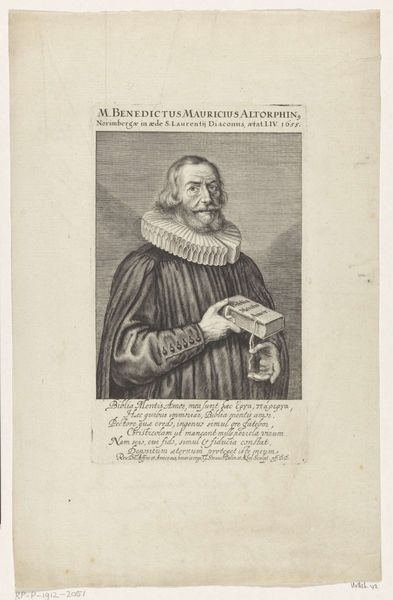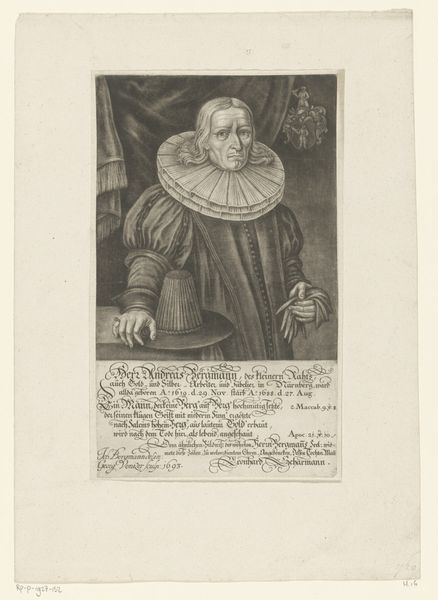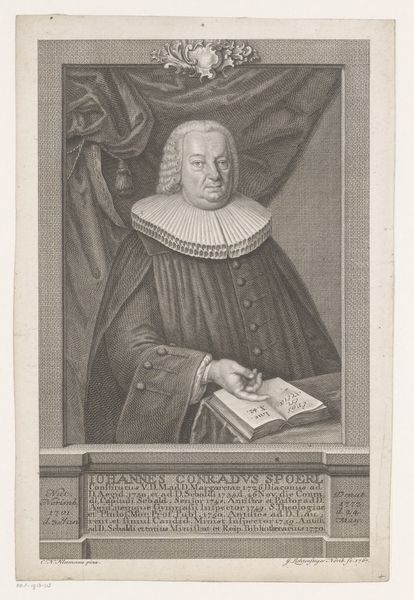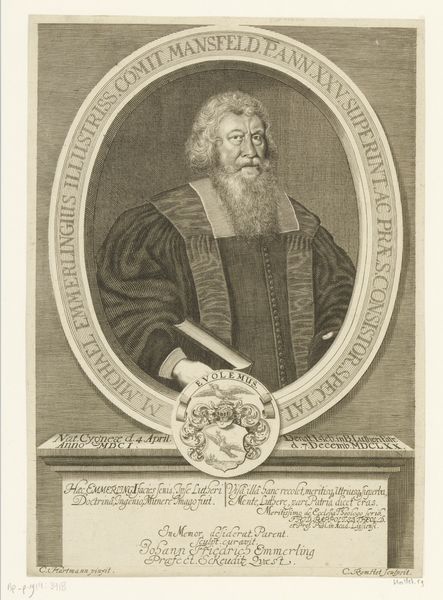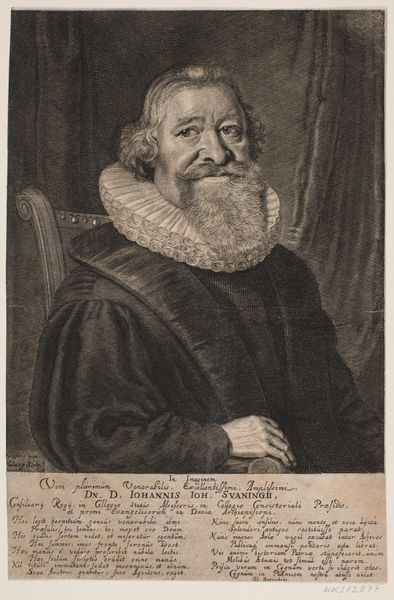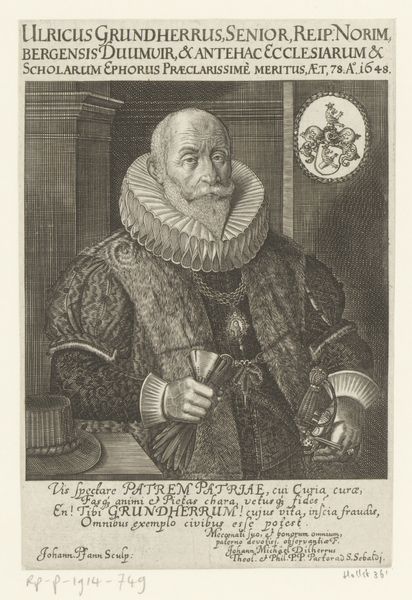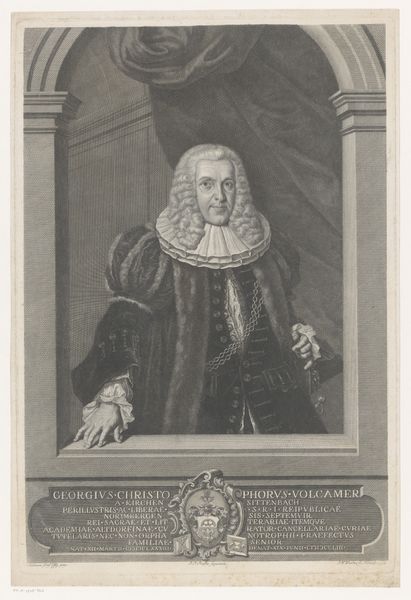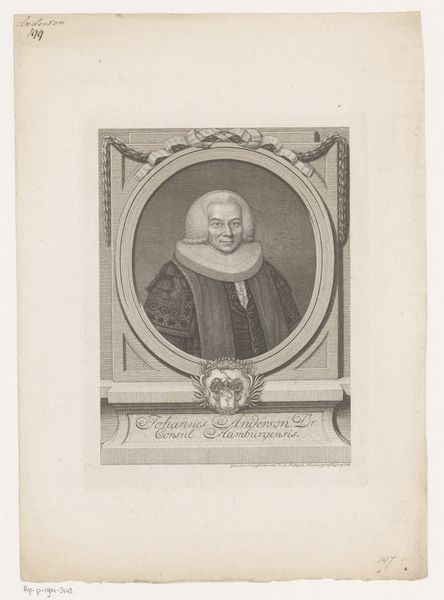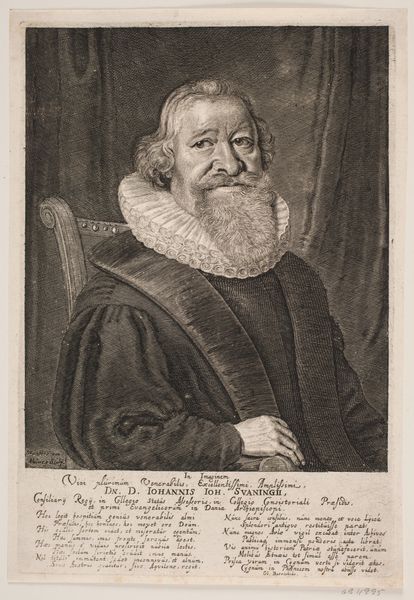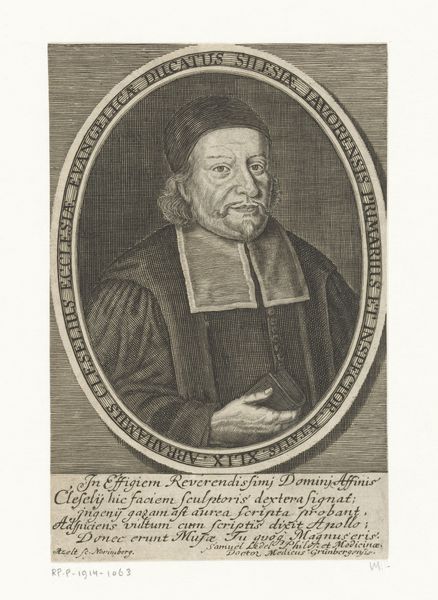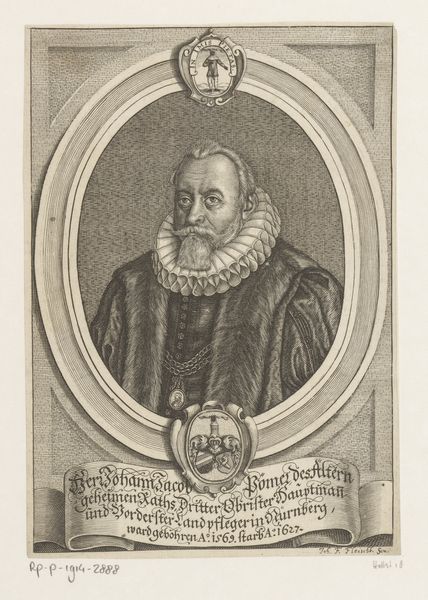
engraving
#
portrait
#
baroque
#
book
#
old engraving style
#
portrait reference
#
portrait drawing
#
academic-art
#
engraving
Dimensions: height 181 mm, width 126 mm
Copyright: Rijks Museum: Open Domain
Curator: Here we have "Portret van Georg Queccius," an engraving dating from between 1656 and 1722, currently held at the Rijksmuseum. The artist, although unconfirmed, is suggested to be G. Fen. What are your initial thoughts? Editor: It feels somber, almost austere. The intricate ruff collar draws the eye, but then you notice the downturned mouth, the heavy lidded eyes. There's a weight in that gaze. Curator: As an engraving, the labor involved is noteworthy. Imagine the careful scoring of the metal plate, the physical act of transferring the image through pressure and ink. We also must consider the market for printed portraits at that time; this piece probably saw considerable circulation. Editor: Absolutely, and what an iconic representation of scholarship. The book in his hands is not merely an object, it's a symbol of his intellect, his access to knowledge, and the societal value placed upon learning. Look how it’s prominently displayed. Curator: The materials used, the paper, the ink, even the very tools would be steeped in a particular economy and craft tradition. The Baroque aesthetic certainly manifests in the level of detail in his clothing; all these markers indicate social standing and material wealth of both artist and sitter. Editor: Speaking of standing, his garb reminds me that even clothing functions as a visual language. The black robes, the meticulously pleated ruff—these elements signal status, religious affiliation, and intellectual pursuit, they really solidify Georg Queccius' image as a figure of authority. The rumpled paper in his other hand makes one wonder what thoughts and notes were put on there and why those and not others. Curator: Exactly! This work exemplifies how image making was tied to production, distribution, and consumption within specific social strata, while speaking volumes about class and industry in seventeenth century Netherlands. It speaks about an old form of circulating media images. Editor: I agree completely. It is a great look at the relationship between the personal image, societal rank, and time, that has outlasted its first printing in that now it sits here. Curator: The act of engraving creates reproducibility and longevity, enabling ideas and likenesses to transcend their original context. A thought that makes me wonder now about what Georg Queccius may think, observing us from across time. Editor: That’s the wonder of images; their stories resonate, connecting us to echoes of the past.
Comments
No comments
Be the first to comment and join the conversation on the ultimate creative platform.

